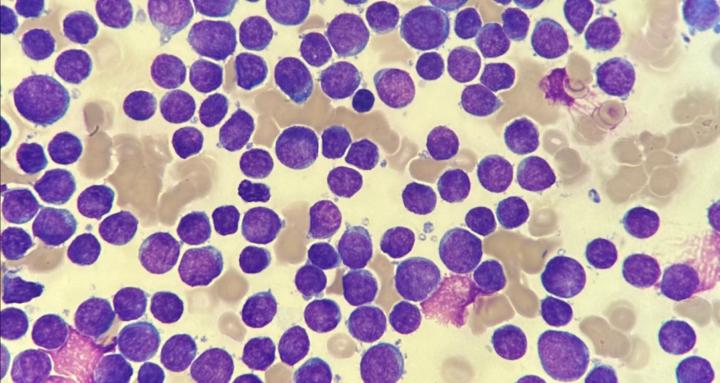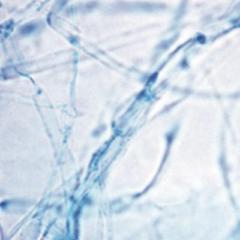7d • General discussion
Microbiology Study Tip: Breakdown Bacteriology, Mycology & Parasitology
Greetings My Little Gang of Nasties!
Posed a great question in the group. Since Microbiology is a huge subject, and the smartest way to study is to break it into major categories and then master the distinguishing features of each.
Here’s how I’d suggest you prepare on top of utilizing using MediaLab/LabCE or the ASCP BOC Exam Simulator questions to reinforce the theory:
🦠🧫🧪
BACTERIOLOGY
Focus Areas:
- Gram-positive vs Gram-negative (cell wall structure, staining, antibiotic susceptibility)
- Morphology (cocci vs. bacilli)
- Biochemical reactions (Catalase, coagulase, oxidase, TSI, etc.)
- Pathogenic mechanisms (toxins, virulence factors)
- Clinically important bacteria (Staphylococcus, Streptococcus, Enterobacteriaceae, Non-Fermentative Bacilli, Mycobacteria, etc.)
Study Tips:
- Master the Gram stain flow chart.
- Learn “differentiating tests:” the one test that separates similar bugs (e.g., catalase for Staph vs Strep, coagulase for S. aureus vs coagulase negative staph).
- Practice with TSI and other biochemical slants until interpretation is second nature.
🍄 🍄🟫🥐🥖🍞
MYCOLOGY
Focus Areas:
- Yeasts vs molds vs dimorphic fungi
- Microscopic morphology (hyphae, spores, budding patterns)
- Fungal culture characteristics (agars, colors, specific characteristics on the plate)
- Clinically relevant fungi (Candida, Cryptococcus, Aspergillus, Histoplasma, Blastomyces, Coccidioides, etc.)
- Stains (India ink, KOH prep, silver stain)
Study Tips:
- Compare systemic dimorphic fungi side-by-side (location, morphology, diseases).
- Use flashcards with images of fungal structures, the ASCP is often image-heavy!
- Group fungi by disease type: superficial (tinea), subcutaneous (sporotrichosis), systemic (Histoplasma), opportunistic (Candida, Aspergillus).
🦟🪲🪳🕷️
PARASITOLOGY
Focus Areas:
- Protozoa vs helminths
- Life cycles (hosts, vectors, transmission)*** INCREDIBLY IMPORTANT
- Common parasites and their disease states (Giardia, Plasmodium, Toxoplasma, Entamoeba, Ascaris, Strongyloides, Schistosoma, etc.)
- Lab ID (ova, trophozoites, cysts in stool; blood smears for malaria; serology - Again, ASCP is IMAGE HEAVY)
Study Tips:
- Learn parasites by body site: GI, blood/tissue, CNS.
- Draw simplified life cycles to visualize transmission.
- Memorize unique identifying features (e.g., eggplant emoji gametocyte in Plasmodium falciparum, Giardia with the eyeballs/glasses).
📚 How to Study Efficiently
- Flow charts are your best friend. For bacteria (Gram stain + biochemical reactions), fungi (dimorphic vs opportunistic), and parasites (by site + vector).
- Chunk the material. Don’t try to memorize a huge list; learn in comparisons (Staph vs Strep, Candida vs Cryptococcus, Malaria species side by side).
- Active recall. Do practice questions daily! (LIKE I’M ALWAYS SAYING) Don’t just read and memorize the correct answer, understand how you got there. Use ChatGPT/Google! No shame in that
- Image practice. Especially for fungi and parasites, exams love to show images.
- TSI and key biochemical reactions. Even if not on your flow charts, make sure you know gas, H2S, lactose vs glucose fermentation.
I hope this gives you all a lot more guidance with regard to the breakdown of Microbiology as a whole.
If you’re ready to finally pass this exam, join the inner circle of Microscope Views. Every WEEK, we have group study sessions where we go over practice questions together and break stuff down to the who, what, when, how, and why things happen at the cellular level.
Join now by clicking here https://www.skool.com/microscopeviews/about?ref=badbb26c40a147eea94634972a25414a
xoxo,
Marilyn
15
4 comments

skool.com/microscope-views-free-6601
🧪🔬Helping Students Effectively Study For & Pass The ASCP Exam
Powered by





